InterviewSolution
This section includes InterviewSolutions, each offering curated multiple-choice questions to sharpen your knowledge and support exam preparation. Choose a topic below to get started.
| 87651. |
A sample contains a mixture of NaHCO_(3) and Na_(2)CO_(3).HCl is added to 15,0 g. of the sample, yielding 11.0 g of NaCl. What percent of the sample is Na_(2)CO_(3) [("Reaction are :"),(Na_(2)CO_(3)+2HCl rarr 2 NaCl+CO_(2)+H_(2)O),(NaHCO_(3)+HCl rarr NaCl+CO_(2)+H_(2)O)] MW of NaCl=58.5, MW of NaHCO_(3)=84, MW of Na_(2)CO_(3)=106 g mol^(-1) |
|
Answer» MOL. WT. of `C_(2)H_(5)OH=46 GM` `M_(1)V_(1)=M_(2)V_(2)` `(90xx10xx0.8)/46 xxV=(10xx10xx0.9)/46 xx40` `V=(10xx0.9xx40)/(90xx0.8)=5 mL`. |
|
| 87652. |
A sample contains two radioactive substances A and B in the ratio of 4 : 1 . If their half lives are 24 and 16 hours respectively , then after two days what will be the ratio of A and B? |
Answer»  `(n_(A))/(n_(B)) = (1)/(1//8) = 8` |
|
| 87653. |
A sample contains 0.1 gram-atom of radioactive isotope ._(Z)^(A)(t_(1//2)=5 days) How many number of atoms will decay during eleventh day? [N_(A)= Avogradro's number] |
|
Answer» `0.1(-E^(-(0.693 xx 11)/(5))+e^(-(0.693 xx10)/(5)))` |
|
| 87654. |
A sample containing only CaCo_(3) and MgCo_(3) is ignited to CaO and MgO. The mixture of oxides produced weight exactly half as much as the original sample. Calculate the percentages of CaCO_(3) and MgCO_(3) (by mass) in the sample. |
|
Answer» |
|
| 87655. |
A sample consisting of chocolate-brown poweder of PbO_2 is allowed to react with excess of Kl and iodine liberated is reacted with N_2H_4 in another container. The volume of gas liberated from this second container at STP was measured out to be 1.12 litre.Find out volume of decimolar NaOH required to dissolve PbO_2 completely. (Assume all reactions are 100% complete). Give your answer divide by 100. |
|
Answer» `N_2H_2+2I_2toN_2+4HI` moles of `N_2` liberated `=11.2/22.4=5xx10^(-2)` mole moleof `PbO_2` reacted `=10^(-1)` mole `PbO_2+2H_2OtoPb(OH)_4` `PB(OH)_4+2NaOHtoNa_2[Pb(OH)_6] or Na_2PbO_2` mole of NAOH required `=10^(-1)xx2` `Vxx1/10xx10^3=2xx10^(-1) " " V=2/10^(-3)=2000` ml |
|
| 87656. |
(A)Same reactants give different products with different catalysts.(R ) Catalyst is highly specific or selective. |
|
Answer» |
|
| 87657. |
(A) : Same amount of copper can be deposited from cupric salt and cuprons salt using one faraday. (R): One faraday can deposite one equivalent of copper. The correct answer is |
|
Answer» Both (A) and (R) are TRUE and (R) PROPERLY explans (A) |
|
| 87658. |
(A): Same chemicals may be used as antiseptics as well as disinfectants. (R): A chemical which destroys micro organism can be used as an antiseptic in higher concentration and as disinfectant in lower concentration. |
|
Answer» Both (A) and (R) are TRUE and (R) is the CORRECT explanation of (A) |
|
| 87659. |
A salt 'X' is dissolved in water (pH = 7), the resulting solution becomes alkalinein nature. The salt is made of |
|
Answer» A STRONG ACID and strong base |
|
| 87660. |
A salt X gives white precipitates with lead acetate solution, insoluble in hot water and nitric acid. The salt X most probably contains: |
|
Answer» |
|
| 87661. |
A salt which gives CO_2 with hot H_2SO_4and also decolourises acidified KMnO_4 on warming is : |
|
Answer» `HCO_3^-` |
|
| 87662. |
A salt which gives brown vapours with cone. H_2SO_4and turns water yellow is: |
|
Answer» NITRATE |
|
| 87663. |
A salt when heated with H_(2)SO_(4) librates violet gas which turns starch paper blue, salt may be |
|
Answer» `NaNO_(3)` |
|
| 87664. |
A salt solution reacts with some drops of chloroform and the mixture is shaken with chlorine water. The chloroform layer becomes violet. Salt solution contains: |
|
Answer» `NO_(2)^(-)` ION <BR>`NO_(3)^(-)` ion |
|
| 87665. |
A salt was first heated with dilute H_2SO_4 and then with concentrated H_2SO_4, no action was observed in either case. The salt must be |
|
Answer» nitrite |
|
| 87666. |
A salt solution reacts with some drops of chloroform and the mixture is shaken with chlorine water. The chloroform layer becomes violet. Salt solution contains. |
|
Answer» `NO_(2)^(-)` ION <BR>`NO_(3)^(-)` ion |
|
| 87667. |
A salt solution is treated with chloroform drops. Then it is shaken with chlorine water. Chloroform layer becomes violet, solution contains. |
|
Answer» `NO_(3)^(-)` ION <BR>`NO_(2)^(-)` ion |
|
| 87668. |
A salt solution is treated with chloroform drops and is shaken with chlorine water. Chloroform layer becomes violet solution contains: |
|
Answer» `NO_2^-`<BR>`NO_3^-` |
|
| 87669. |
A salt solution of Cd^(2+) in dilute HCl, on treatment with a solution of BaCl_(2) gives a white precipitate, which is insoluble in concentrated HNO_(3). Anion in the salt may be : |
|
Answer» `SO_(4)^(2-)` |
|
| 87670. |
A salt solution is acidified with dil. HCl and BaCl_2 solution is added. A white ppt. is formed. The salt contains |
|
Answer» `CL^(-)` White ppt. of `BaSO_(4)` is insoluble in dil. HCl and other MINERAL acids. |
|
| 87671. |
A salt producing hydrocarbon among these compounds is |
|
Answer» ethane `H-C-=C-H+2Na overset("LIQUID "NH_(3))to NaC-=CN a+H_(2)`. |
|
| 87672. |
A salt on treatment with dil. HCl gives a pungent smelling gas and a yellow precipitate. The slt gives green flame when tested. The salt solution gives a yellow precipitate with potassium chromate. The salt is |
|
Answer» `NiSO_(4)` `BaS_(2)O_(3)` GIVES `SO_(2)` gas withdil. HCl and also yellow ppt. of barium chromate. `(CH_(3)COO)Ba+K_(2)CrO_(4) to 2CH_(3)COOK+ UNDERSET("yellow ppt.")(BaCrO_(4))darr` |
|
| 87673. |
A salt on reaction with dil. H_2 SO_4 gives a reddish brown gas. The salt is |
|
Answer» `KNO_(2)` `3HNO_(2) to HNO_(3) +H_(2)O +2NO` `underset("From air ")(2NO +O_(2))tounderset(("REDDISH BROWN"))(2NO_(2) UARR)` |
|
| 87674. |
A salt of sulphurous acid is called: |
|
Answer» Sulphate |
|
| 87675. |
A salt MX has NaCl type lattice in which r is the minimum distance between M^(z+) and X^(z-). Each M^(z+) ion is surrounded by |
|
Answer» `6X^(Z-)`ions each at a DISTANCE `r` |
|
| 87676. |
A salt of NaX overset(MgCl_(2))rarr" white ppt." on boiling. Thus, anion X is : |
|
Answer» `HCO_(3)^(-)` |
|
| 87677. |
A salt of 3d metal gave a white precipitate with NH_(4)OH, but dissolves in excess NH_(4)OH. Name the 3d metal. |
|
Answer» |
|
| 87678. |
A salt mixture consists of yellow solid (A) and a colourless solid (B). The aqueous solution of the mixture (i) On passing H_(2)S, we get a black precipitate of (C), which dissolves only in aqua-regia. On extraction and reaction with SnCl_(2) a greyish white precipitate is obtained. (ii) On treatment with ammonium hydroxide a reddish brown precipitate (D) is obtained. The sodium extract of the solution gives the following tests: (i) On reaction with AgNO_(3) it gives a yellow precipitate which is insoluble in NH_(3). (ii) On shaking with FeCl_(3) and C Cl_(4) a violet colouration in C Cl_(4) layer is obtained. Mixture of performing flame test gives lilac colour. Identyfy the compounds (A), (B) , (C) and (D). |
| Answer» | |
| 87679. |
A salt is heated first with dil. H_(2)SO_(4) and then with conc. H_(2)SO_(4). No reaction takes place. It may be |
|
Answer» Nitrate |
|
| 87680. |
A salt imparts a yellow colour to a borax bead in an oxidising flame. What would be the colour of the bead in a reducing flame |
|
Answer» GREEN |
|
| 87681. |
A salt gives white residue in charcoal cavity test but in cobalt nitrate test it gives pink mass. It represents : |
|
Answer» `ZN^(+2)` |
|
| 87682. |
A salthaving BO_(3)^(3-) on burning with cone H_(2)SO_(4) gives …. Edge flame |
|
Answer» Green `H_(3)BO_(3) + 3C_(2)H_(3)OH rarr underset("edge FLAME")underset("Burns with green")((C_(2)H_(5))_(3)BO_(3))+3H_(2)O` |
|
| 87683. |
A salt containing water of crystallization gave the following percentage composition : Mg = 9.76 , S = 13.01 , O = 26.01 and H_(2)O = 51.22 Calculate the simplest formula. (At. Mass of Mg = 24) |
|
Answer» `THEREFORE"Empirical Formula "=MgSO_(4).7H_(2)O` |
|
| 87684. |
A salt (A) of the formula C_4 H_5 O_2 Ag on refluxing with bromine gives (B), C_3 H_5 Br . Compound (B) on heating with alcoholic KOH yields (C), C_3 H_4, which decolourises Br_2//CCl_4 and cold dilute KMnO_4 solution, but does not react with ammonical AgNO_3 or Cu_2 Cl_2. (C) on ozonolysis gives (D), C_3 H_4 O_4, which on heating eliminates CO_2 to give aceitic acid. What are (A) to (D)? |
Answer» SOLUTION :
|
|
| 87685. |
In a system.A(s)+B(g)+ Heatrarr 2C(s)+2D(g)equilibrium is established.The pressure of B vapour is doubled to re - stablish the equilibrium.The factor by which D is changed is : |
| Answer» ANSWER :C | |
| 87686. |
A rubber balloon permeable to hydrogen in all its isotopic forms is filled with deuterium (D_(2)) and then placed in a box containing pure hydrogen. Will the balloon expnad or contract or remains as it is ? |
| Answer» SOLUTION :Since the MOLECULAR weight of `D_(2)` is greater than that of `H_(2)`, rate of diffusion of `H_(2)` will be HIGHER than that of `D_(2)`. Thus, the balloon will expand. | |
| 87687. |
A: Roasting process is involved in the metallurgy of Cu from Malachite ore. R: Roasting is the process of heating the ore in absence of air. |
|
Answer» If both Assertion & Reason are true and the reason is the CORRECT explanation of the assertion, then mark (1). |
|
| 87688. |
A reversible reaction H_(2)+Cl_(2)hArr2HCl is carried out in one litre flask. If the same reaction is carried out in two litre flask, the equlibrium constant will be |
|
Answer» Decreased |
|
| 87689. |
A reversibleheatengine A(basedon carnot cycle ) absorbs heat froma reservoirat 1000 K and rejects heat to a reservoirat T_(2) . A secondreserviour at T_(2) and rejects energy to areservoirat360 K .If the efficienciesof engines A and Bare thesame then the temperature T_(2)is . |
|
Answer» 680 K `eta_(1)= 1- (T_(2))/(1000)` For B `eta_(2) = 1-(360)/(T_(2))` `1- (T_(2))/(1000)= 1 -(360)/(T_(2))` `T_(2)= 600K` |
|
| 87690. |
A reversibleheatengine A(basedon carnot cycle ) absorbs heat froma reservoirat 1000 Kand rejects heatto a reservoir at T_(2). A secondreversibleengine B absorbs, the sameamountof heatas rejected by the engine A, from thereservoir at T_(2) and rejectsenergytoa reservoir at 360 K.If the efficienicesof engines A and B are thesame then thetemperature T_(2) is . |
|
Answer» 680 K `eta_(A) = eta_(B)` `So(1000-T_(2))/(1000)=(T_(2) - 360)/(T_(2)) = T_(2) = sqrt(360 xx 1000)=600 K` |
|
| 87691. |
A reversible chemical reaction having two reactant is in equiliberium. If the concentrations of the reactants are doubled then the equiliberium constant will : |
| Answer» Answer :D | |
| 87692. |
A reversible chemical reaction haiving two reactants in equilibrium. If the concentrations of the reactants are doubled, teen the equilibrium constant will |
|
Answer» ALSO be DOUBLED |
|
| 87693. |
A resucing agent is a substance which can |
|
Answer» ACCEPT electron |
|
| 87694. |
A reseach scholar synthesised the compound A in the laboratory He wanted to study this compound in acidic medium and kept for some time in it .After anhour , when isolated the compound ,to his surprise, he got the mixture of two compounds B, C. He studied their properties and compared them with A. B is formed due to : |
|
Answer» cleavage of C-O BOND followed by esterification between -COOHand -OH PRESENT  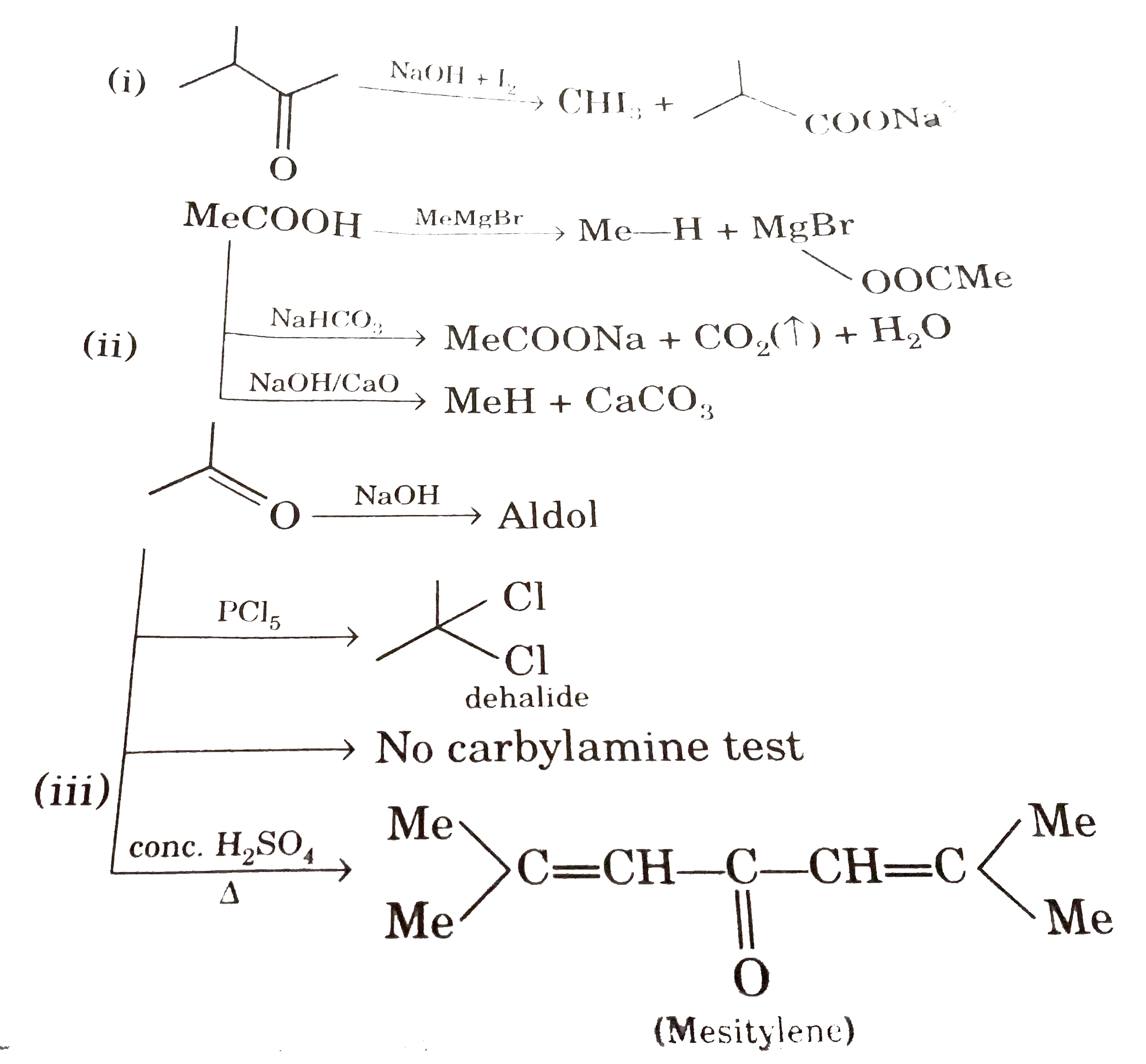
|
|
| 87695. |
A reseach scholar synthesised the compound A in the laboratory He wanted to study this compound in acidic medium and kept for some time in it .After anhour , when isolated the compound ,to his surprise, he got the mixture of two compounds B, C. He studied their properties and compared them with A. Compound C is : |
|
Answer» `CH_(3)overset(O)overset(||)C CH_(3)`  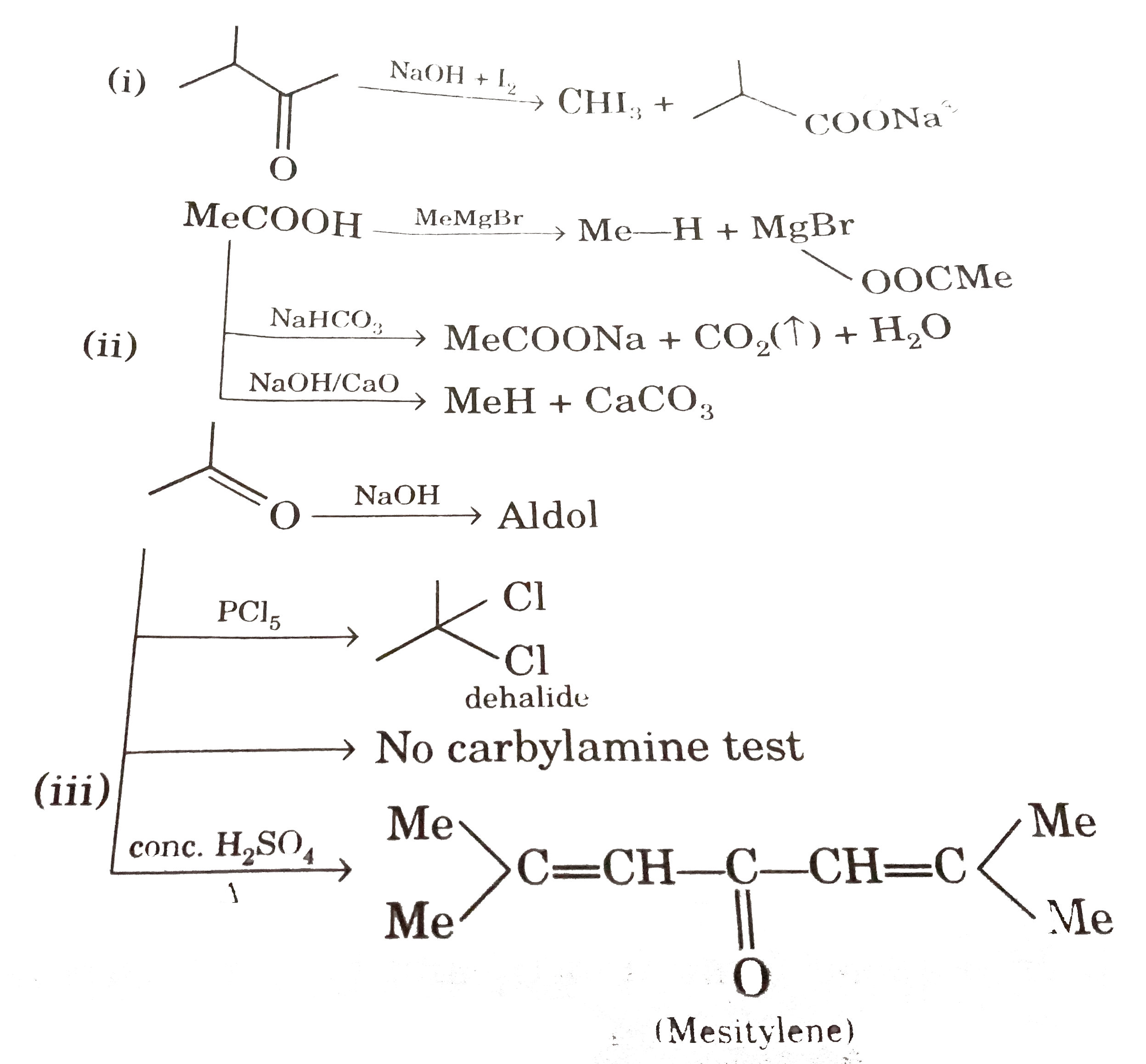
|
|
| 87696. |
A reseach scholar synthesised the compound A in the laboratory He wanted to study this compound in acidic medium and kept for some time in it .After anhour , when isolated the compound ,to his surprise, he got the mixture of two compounds B, C. He studied their properties and compared them with A. B formed is : |
|
Answer»
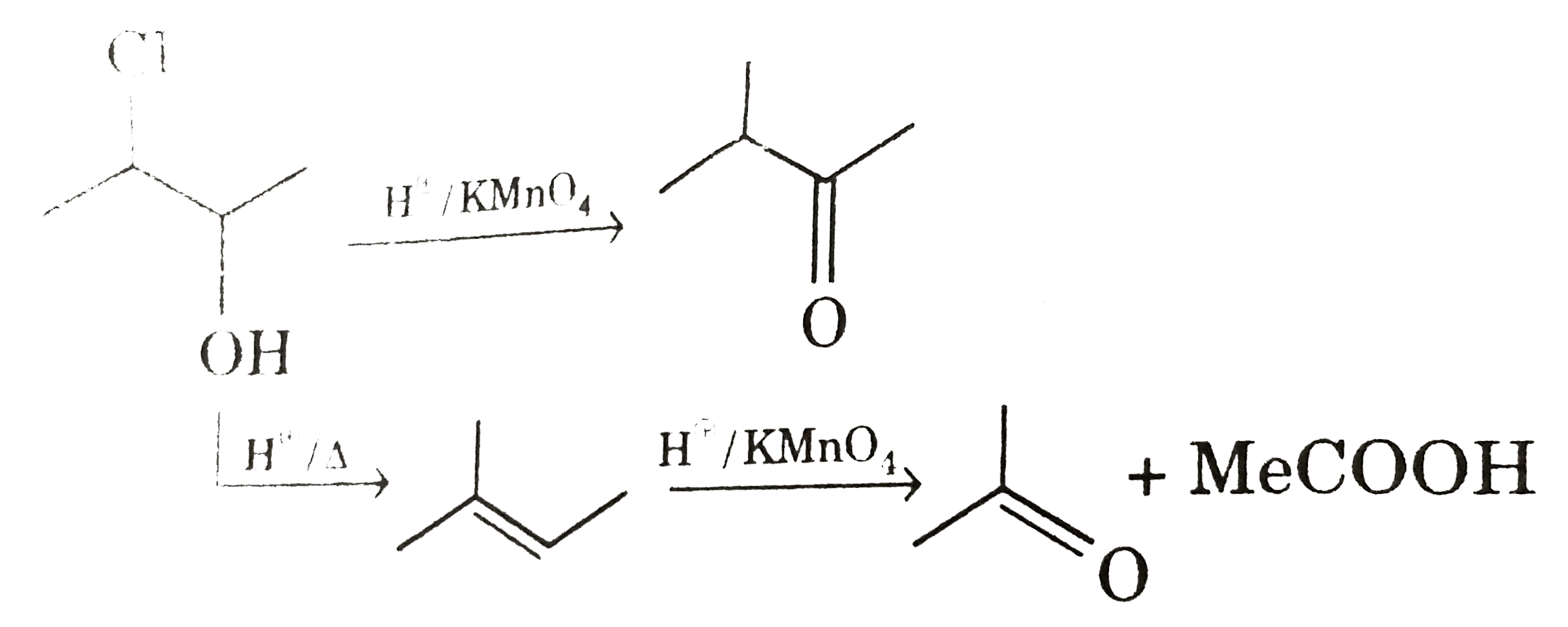 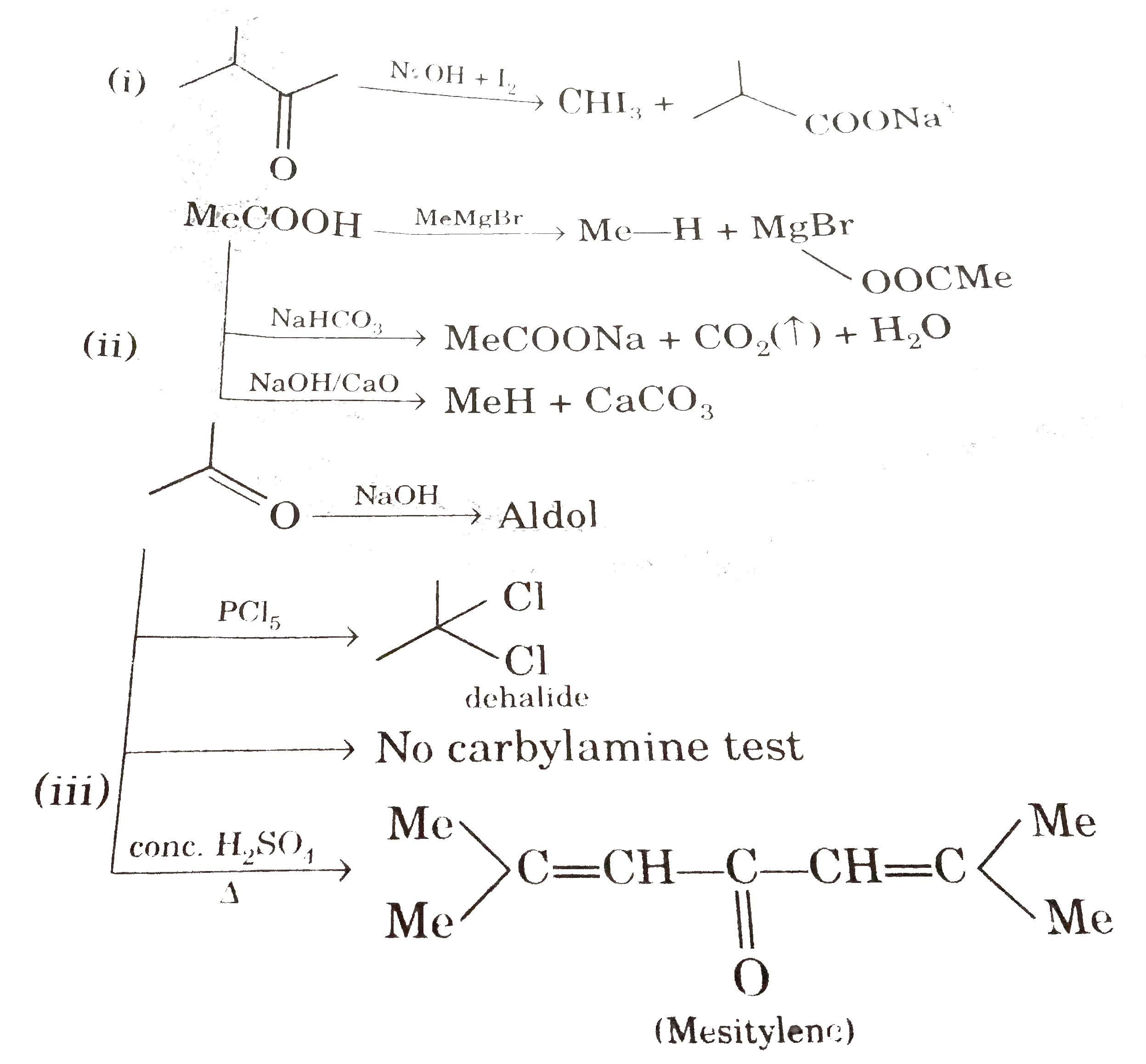
|
|
| 87697. |
(A) Relation between (A)&(B) is : |
|
Answer» IDENTICAL 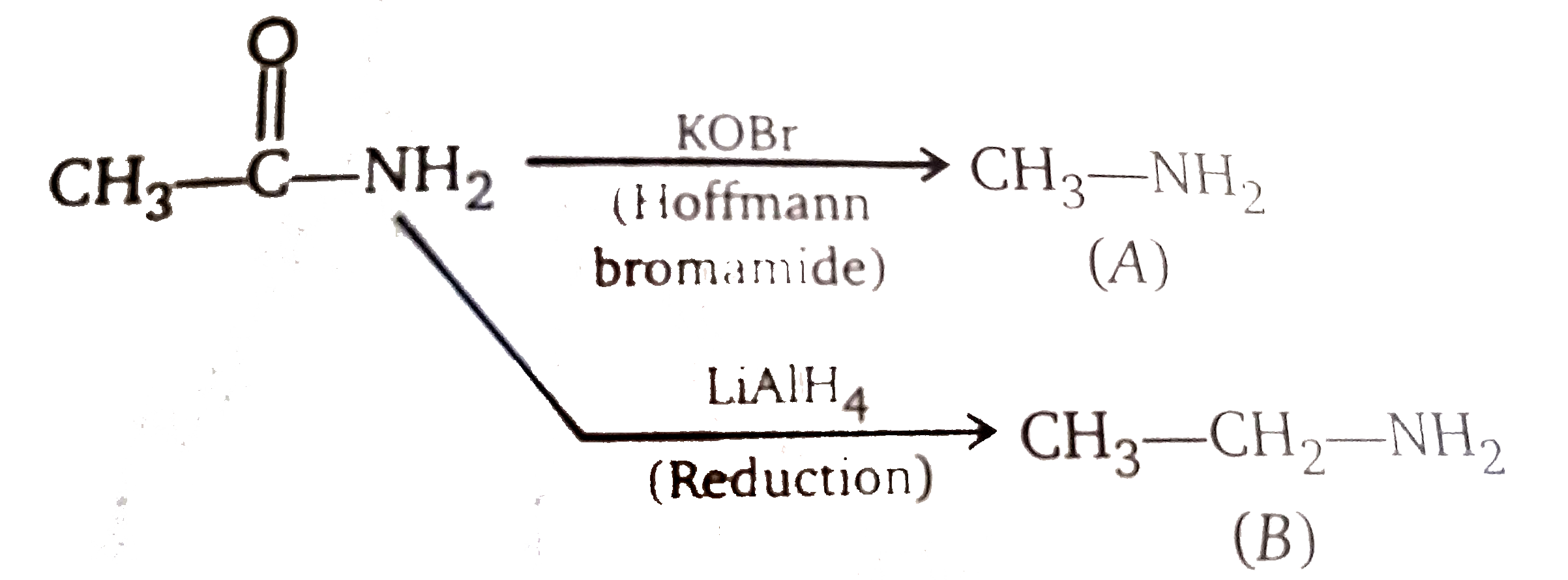
|
|
| 87698. |
(A) Reimer Tiemann reactions of phenol with chloroform in alkali produce salicylade-hyde as major product(R) The reaction involves in the formation of dichloro carbene as intermediate |
|
Answer» Both (A) and (R) are true and (R) is the CORRECT EXPLANATION of (A) |
|
| 87699. |
(A) Reimer-Tiemann reaction of phenol with C Cl_(4) in NaOH at 340K gives salicylic acid as the major product. (R ) The reaction occurs through intermediate formation of dichlorocarbene. |
|
Answer» If both (A) and (R ) are CORRECT and (R ) is correct explanation of (A ). |
|
| 87700. |
A regular tetrahedron is obtaining during _____hybridisation in alkanes. |
|
Answer» |
|